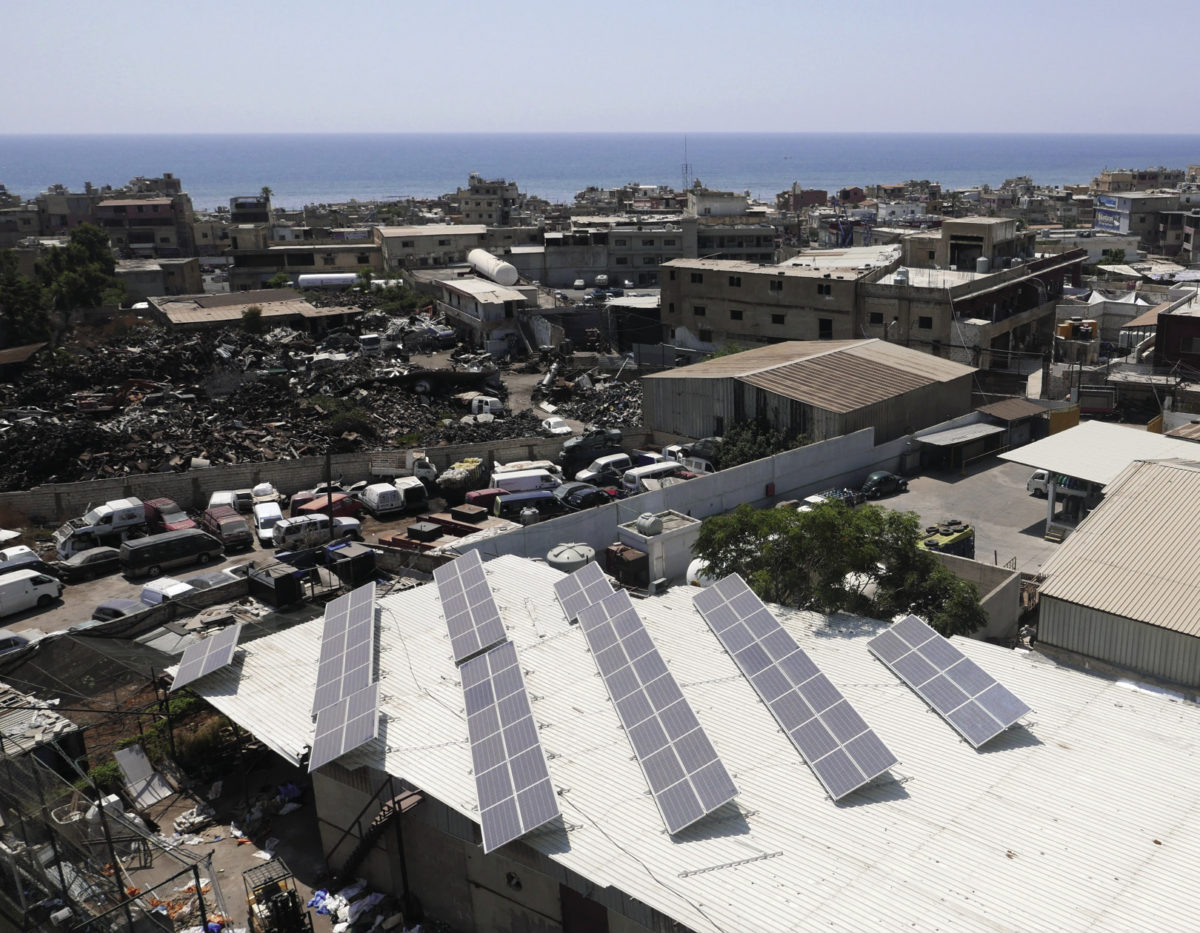By the end of 2020, Lebanon fell short of its national target of 100 MW for solar capacity, reaching a cumulative total of 89.84 MW. This shortfall reflected the bleak state of the solar sector, mirroring the overall economic downturn.
Lebanon's ongoing political and economic deadlock persists, marked by soaring inflation, a failed banking system, currency collapse, and the continued incompetence and reluctance of Lebanese political forces to undertake economic reforms.
By February this year, the Lebanese currency had lost more than 98% of its pre-crisis value. In May, the World Bank said “the systemic failure of Lebanon’s banking system and the collapse of the currency have induced a pervasive dollarized cash economy estimated at almost half of GDP in 2022.” The growing dollarized economy – at about $9.9 billion in 2022, almost half the size of the Lebanese economy – is a major impediment to economic recovery, it added.
Lebanon's severe political and economic turmoil has not only plunged the majority of its population into poverty but has also left its citizens in literal darkness. Prior to the crisis, the state-owned electric utility, Electricité Du Liban (EDL), and private diesel generators combined to provide approximately 24 hours of electricity supply. Currently, they can barely manage 12 to 14 hours per day, leaving citizens in complete blackouts for the rest of the day.
“It was then when people realized the importance of solar energy and its competitive low cost compared to fossil fuels,” Marc Ayoub, energy researcher at the American University of Beirut's Issam Fares Institute and non-resident fellow at the Tahrir Institute for Middle East Policy, told pv magazine.
In May, the Lebanese Center for Energy Conservation (LCEC) stated that its projections indicate Lebanon will surpass 1 GW of solar rooftops within the first 10 days of June 2023. By the end of 2022, cumulative solar installations had reached 870 MW, with 2022 alone seeing a total installed capacity of 663 MW. This stands in stark contrast to 2020, when Lebanon added only 14 MW of new solar rooftop capacity, representing a 47-fold increase in yearly rooftop photovoltaic installations. In other words, Lebanon's rooftop PV market is booming.
The growth of rooftop PV in Lebanon cannot be attributed to a remuneration scheme. Ayoub said that although net metering was approved by EDL's board in 2011, various technical and administrative barriers prevented the net metering market from gaining significant traction. One of the main challenges, according to Ayoub, is the insufficient electricity supply and frequent blackouts even prior to the country's economic collapse, which often prevented net metering users from exporting excess power to the grid. Additionally, the bureaucratic process of installing metering at both the utility and customer ends hindered the practical implementation of the net metering scheme.
Popular content
Due to the economic collapse, net metering in Lebanon was already challenging, and currently, the net metering scheme is non-existent, according to Ayoub. The growth of rooftop PV now primarily relies on off-the-grid solar plus battery systems in residential and small business sectors. The main disadvantage for this, according to Ayoub, is “that a big chunk of the electricity generated from solar is wasted after batteries are charged.”
Institutional financing options for installing such systems are limited. Instead, those who can afford it rely on their own private savings or receive remittances from family and friends abroad, paying in cash with the US dollar, noted Ayoub. Some individuals even resort to selling personal assets, jewelry, and gold to cover the minimum cost of solar systems, which ranges from $4,000 to $7,000.
Having said that, about a year ago Lebanon’s Banque De L’Habitat started rolling out a new scheme to provide loans to help Lebanese households buy and install solar systems. The scheme is running with technical assistance by the LCEC. Ayoub said there are currently discussions initiated by international financing institutions such as the World Bank, the European Bank for Reconstruction and Development and the European Union, to channel new financing to the rooftop PV sector, but these “are yet to materialize due to the accompanying risks the macroeconomic context of the country currently entails.”
In 2021, pv magazine reported that Lebanon's Industrial Research Institute (IRI) declared that all used solar panels imported since October 2021 did not meet national standards for such systems. As a result, imports of second-hand PV panels have been effectively blocked. Ayoub noted that despite this ruling, some unregulated providers have emerged during the crisis and continue to offer equipment (panels, inverters, batteries) that does not meet the standards set by the IRI.
The Lebanese rooftop PV boom is a sign that people want to maintain basic living standards and keep their households and businesses running. The country is in dire need of political reform, which also includes the energy sector.
This content is protected by copyright and may not be reused. If you want to cooperate with us and would like to reuse some of our content, please contact: editors@pv-magazine.com.


Another way Gov steals money from citizens